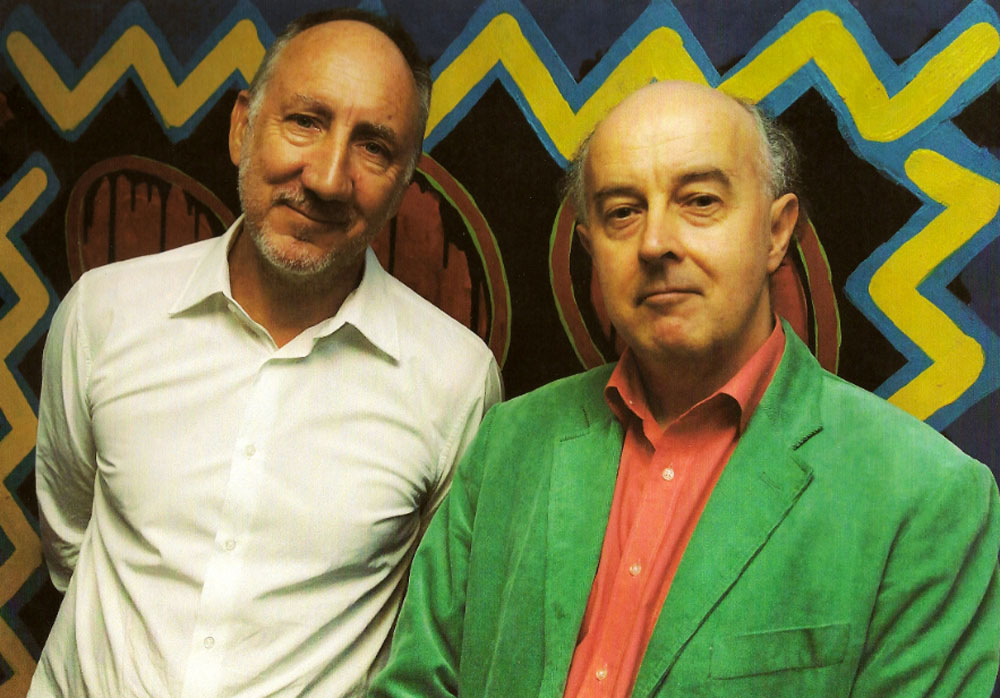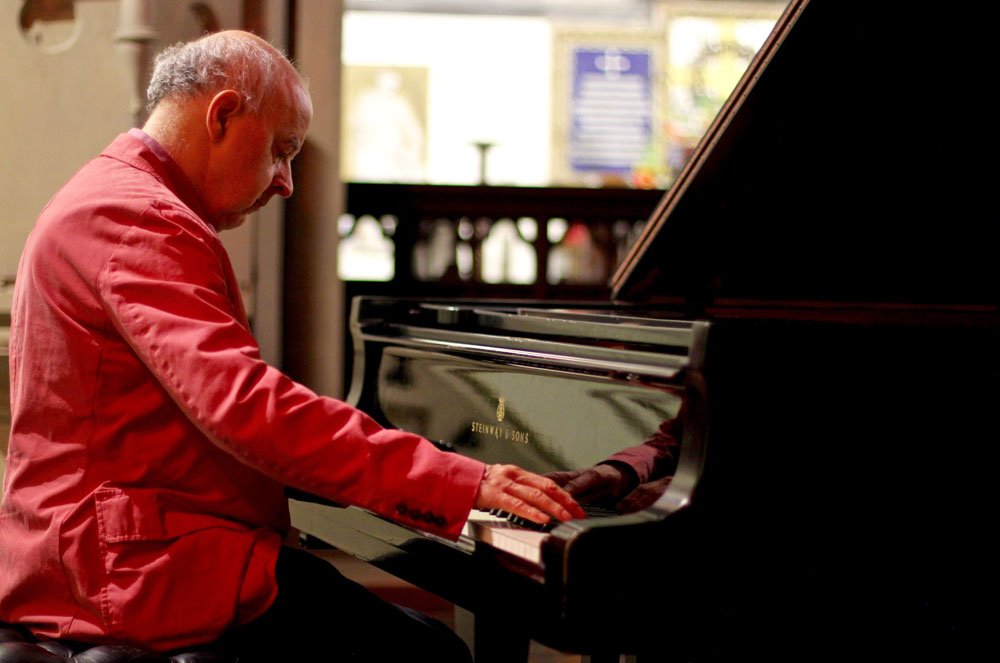Lawrence Ball has a fantastic new album of electronic music called Arp City which was released by Navona Records on April 19, 2024.
Arp City is a sequel to Method Music, which was a spin off album from the Lifehouse Method project that he worked on with Pete Townshend.
Lawrence and Pete first met in 1998 at the annual Planet Tree Music Festival that Lawrence ran and Pete later helped fund. Electronica maestro Terry Riley was the featured guest that year, who was a big influence on Pete's early synth work. Pete later asked Lawrence to help create the Lifehouse Method website that launched in 2007, which was a system designed to generate unique pieces of music processed from various personal data that was gathered from visitors to the site. The songs generated were considered to be authentic musical “portraits” of the “sitters” who took part in the Method experiment. The concept of the Lifehouse Method grew out of Pete Townshend’s 1971 Lifehouse story, which provided the inspiration and backing tracks to such masterpieces as The Who’s Baba O’Riley, and other classics that were featured on Who's Next.
In 2012, Lawrence Ball released Method Music, a 2-CD set of music that was originally generated as sample pieces designed to demonstrate to Pete how the sitter portraits output by the Lifehouse Method portraiture system could sound. These Imaginary Sitter pieces were elaborated with the help of Pete Townshend’s studio engineer, Myles Clarke, who created high quality instrumentation for the midi patterns, which were played back and recorded through a “myriad sound system” designed to separate each instrument out through individual speakers in order to give each voice a distinct and individual character. The results were astounding, and the music featured on Method Music is rich and stunningly beautiful. Pete used the intro of Imaginary Sitters: Meher Baba Piece in the song Fragments that was on The Who’s 2006 album Endless Wire.
Arp City builds on the technique of using intricate rhythmic patterns, arpeggios and melodic loops like those featured on Method Music, but Lawrence has expanded his sonic palette and the new pieces are more free flowing and less confined to the very strict structures of the software generated music that was used to create the Imaginary Sitter tracks. There is a much warmer human feel to the music, and it’s simply a joy to listen to.
Fans of electronic music should check this album out! It’s now available to stream or buy here.
Many thanks to Lawrence Ball for sending us the lovely photos and his following thoughts on how Arp City compares to Method Music
 Pete Townshend and Lawrence Ball at 2007 Planet Tree Festival, Oceanic Studios, Twickenham London.
Pete Townshend and Lawrence Ball at 2007 Planet Tree Festival, Oceanic Studios, Twickenham London.
Linking Arp City to Method Music
I have a new release “Arp City” which is a sequel in genre to Imaginary Sitters on Method Music - although it is not strictly a “Pete sponsored” production.
Both albums share driving rhythms, melodic vortices/patterns, tough abrasive music combined with humorous and nimble generative melodic loops, drum patterns and musique concrete bursts. Arp City also uses improvised, melodic streams.
The intent with both albums was to create something very dynamic and energised but also very intricate in structure.
Pete’s Baba O’Riley loops - very influential on Method Music - inspired the looped layers in Imaginary Sitters. In Arp City the layers are switched in and out to give a faster contrast and a switchback experience - the carpet being continually moved or removed from ones feet. Momentum with discontinuity.
Arp City has much more freely structured sectioning than the Imaginary Sitters, which I conformed to 10 sections of 30 seconds each so that in the musical portrait system different individuals’ portraits could be superimposed, and the sections switched in synchrony.
Whereas in Imaginary Sitters the melodic material is software generated by harmonic maths, in Arp City keyboard performance is used to trigger often arpeggiated figures manually in multi track collage, truly cities of arps, (aka arpeggios).
Arp City develops the Imaginary Sitters’ textures but conjured from the keyboard rather than maths and software.
Lawrence Ball - May 2024
Notes about Arp City
I had the idea of using multiple, perforated (gappy), improvised instances of generative sequences, using melodic “arp” content, or with drum machine type patterns. A “city” of generative, stacked, bubbling tiers of ARPeggiated figures. I had a city in mind because they shoot up everywhere like tall buildings in a sea of active, ever-shifting textural patterns.
A deeper level of music can be reached by long, intuitively evolving, soaring energetic lines that dissolve the sense of time that inhibits free flow and can speak from a stronger but also more selfless consciousness that dissolves stray impressions and goes deep.
In this album I developed a technique of improvisation with holes, allowing the building of energy without saturating the field with all the sounds all the time, the components are orbiting, not always heard but always felt and present.
Whereas techno, house, and EDM are about the selection of a continuous appealing loop or structure, ARP CITY subverts this by continual introduction of disruptive yet evolving sound. ARP CITY (there is actually a real one, in Texas!) is an approach of perforated layerings, something I developed for floating music but here it is used on its antithesis, bubbling and dynamically active streams of joyously abrasive massages of the mind and its manager.
I felt like pushing the envelope on what could be done ONLY in a studio with sleight of hand. But now, having created the album, I’d like to recover the material into a concert performable format, which looks more than possible.
Lawrence Ball, Navona Records website
 Lawrence Ball at 2017 Planet Tree Festival, Hampstead, London. Photo: Aleksandra Wozniak.
Lawrence Ball at 2017 Planet Tree Festival, Hampstead, London. Photo: Aleksandra Wozniak.
